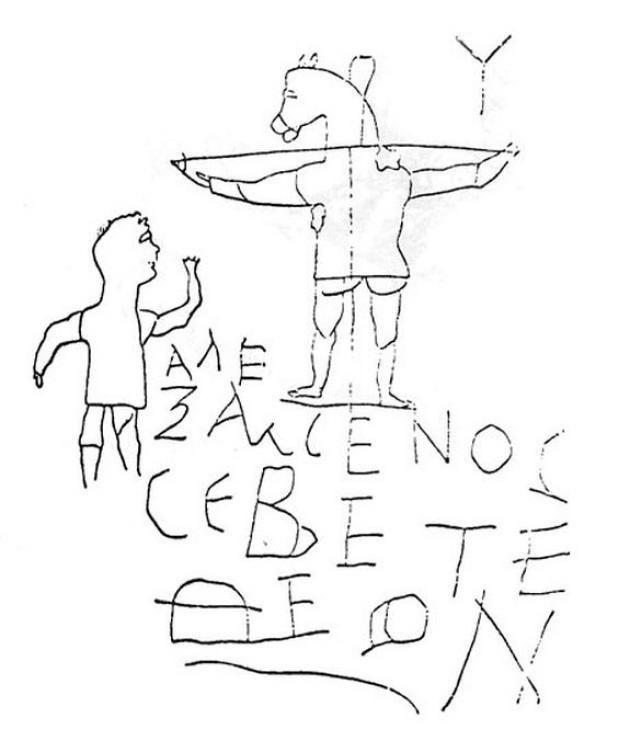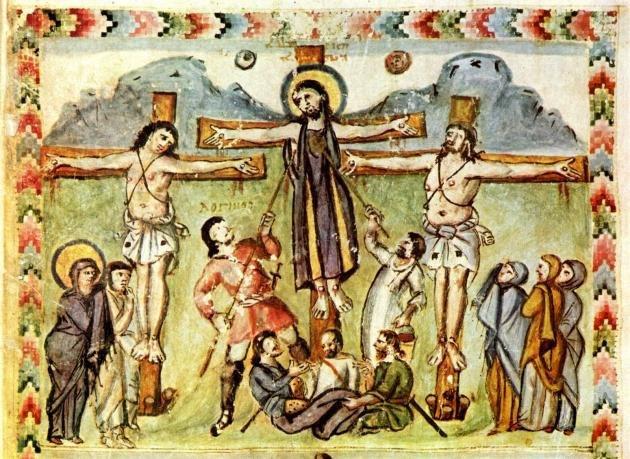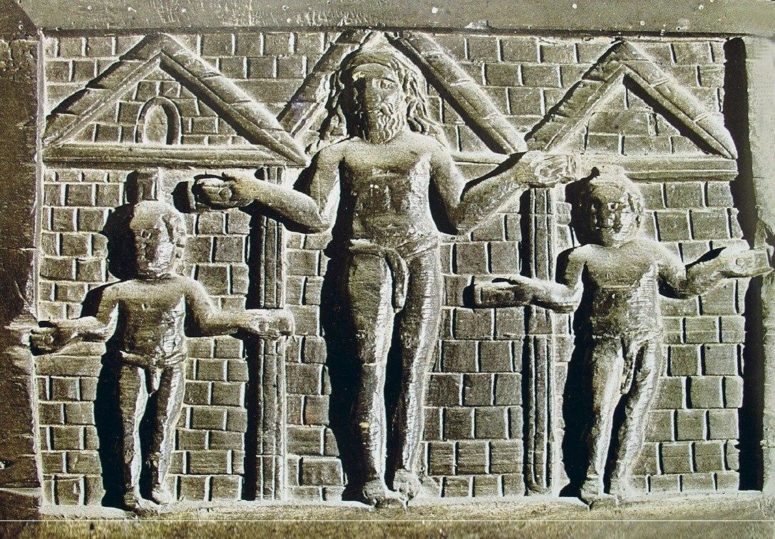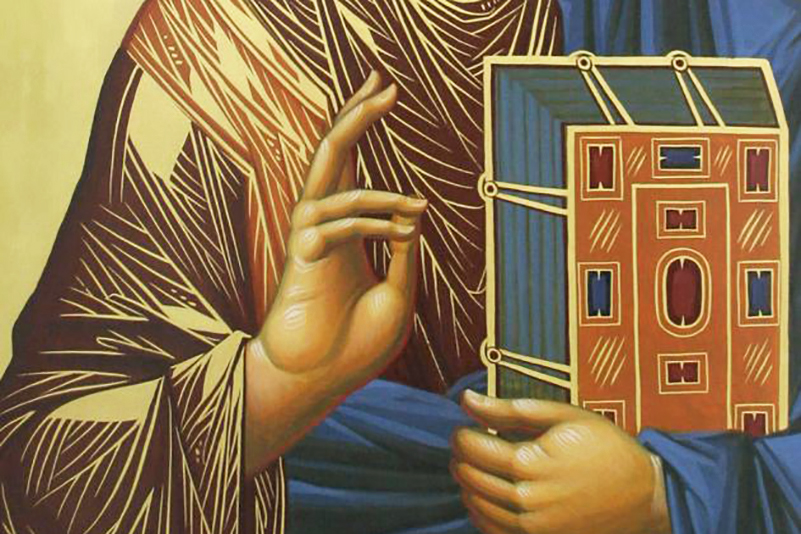
The Week of the Cross. Today I tried to count how many images of the cross I met in a certain area of the temple space: the cross in the hands of the saints, the cross crowning the iconostasis, the cross on the priest’s vestment, the cross on the book in the hands of the saint on the fresco, the crucifixion on the icon Laying in the Tomb, the cross in the carvings, and so on.
The cross was a mystical symbol among many nations long before Christianity. Only in Christianity did it take on a new meaning, symbolizing Jesus Christ and becoming the assurance of people’s salvation.
Christians had refrained from depicting the cross before the era of Constantine, especially with the Crucified Jesus on it, but this does not mean that the symbol itself did not exist. There are ancient pagan caricatures which may represent nothing but a parody on Christian images of the Crucifixion.
One such caricature is a drawing discovered in the 19th century on the ruins of the Palatine Palace in Rome. The drawing dates from around the year 200. It shows a man with a donkey head crucified on a cross. There is another person depicted next to him; he raises his hand, perhaps in order to make a sign of the cross. There is also an inscription in broken Greek, “Alexamenos worships his god”.

Also, the Cross was allegorically depicted as an anchor or a trident, as seen on objects found during excavations in Rome and Pompeii, and as the letter X, the first letter in the word Χριστός and reminiscent of crux decussata, which is part of the sacred monogram of Christ (the Chi-Rho).

Tertullian, Origen, and others attest to the ancient custom of adoration of the cross at the beginning of the 3rd century.
According to Pontius, the biographer of St. Cyprian of Carthage, some Christians in the 3rd century depicted the cross even on their foreheads, which made them easy to spot and put to torment during persecutions. There is one image (on a vessel) of a human face with a cross on the forehead that survived since the mid-3rd century.
The words of the Apostle Paul, “But God forbid that I should glory, save in the cross of our Lord Jesus Christ, by whom the world is crucified unto me, and I unto the world” (Gal. 6:14), and of the other apostles, testify that the cross and the sign of the cross from the beginning of the Christian Church were not just one of the symbols, but served as the central concept of the Christian faith, expressing its very essence.
Let us not be ashamed to confess the Crucified One, and with boldness let us depict with the hand the “sign of the cross” on our foreheads and on everything: on the bread we eat; on the cups we drink from; let us depict it when we go out; when we go to bed and wake up, when we are on our way and when we rest. It is a great safeguard given to the poor as a gift and to the weak without difficulty.
St. Cyril of Jerusalem, 4th century.
It is unknown since when exactly the first “realistic” crucifixions appeared: there are still different opinions on this topic. The earliest surviving crucifixions date back to the fourth and fifth centuries, such as the miniature of Rabbula Gospel, written in 586, which represents Christ crucified on the Cross, dressed in a sleeveless tunic; and there are crucified thieves on both sides of Him. The composition includes the figures of the Mother of God, John the Theologian, holy women, and soldiers, one of whom pierces the Redeemer’s rib with a spear and the other gives Him a sponge. The sun and moon are at the top of the cross; the landscape details are in the background.

There are many similarities between the first surviving crucifixion and the later ones, even modern ones, but there are also significant differences. Thus, the early (Palestinian, Syrian and Cappadocian) icons depict the Savior not dead, but alive: with his eyes wide open, his hands spread wide and his body arranged vertically. Christ is shown as a man who has not yet experienced death. Looking straight ahead, He announces the coming victory over hell and death; moreover, Christ is presented in a state of prayer, “Father, forgive them, for they know not what they are doing” (Luke 23:34).

As a rule, the crucified Lord is painted in the existing Orthodox iconography in a state of death: there is a bleeding wound on His right side from a spear, His eyes are closed, His hands are hanging down a little, His head is lowered, but – in contrast to the Western iconographic tradition – Orthodox images are deprived of extreme, gross naturalism. The death of the Savior is displayed on Orthodox icons not just as a fait accompli, but in direct accordance with one of its main symbols – deep sleep, which symbolizes rest. Also, Death is represented as a dream, which stresses its temporary nature, and thus the inevitability of the Resurrection.
Go away, Devil, or I’ll knock you down with a cross, before which everything trembles. I carry the cross in my members; the cross on my way; the cross in my heart; the cross is my glory.
St. Gregory the Theologian, 4th century.



